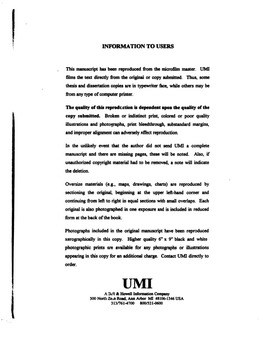| dc.contributor.advisor | Purswell, Jerry L., | en_US |
| dc.contributor.advisor | Schlegel, Robert E., | en_US |
| dc.contributor.author | Whitney, Rick Dale. | en_US |
| dc.date.accessioned | 2013-08-16T12:29:55Z | |
| dc.date.available | 2013-08-16T12:29:55Z | |
| dc.date.issued | 1997 | en_US |
| dc.identifier.uri | https://hdl.handle.net/11244/5578 | |
| dc.description.abstract | This research effort evaluated the effect of wearing an elastic back belt on physiological and perceived strain during a continuous, high-frequency, asymmetric stoop lift task. Specifically, this effort examined the effect of the elastic back belt on work pulse (WP), change in systolic blood pressure during work versus rest ($\Delta$SBP), change in diastolic blood pressure during work versus rest ($\Delta$DBP), lower left back discomfort (LBD), lower right back discomfort (RBD), rating of perceived exertion (RPE), and static lift strength (SLS). A weight of lift of 25% of SLS was continuously lifted and lowered for 120 cycles from a low-lying position in the 90-degree lateral plane to knuckle height in the sagittal plane. Subjects were not allowed to pivot the feet, which were maintained in the near straight-ahead position. | en_US |
| dc.description.abstract | The second experiment was performed with four non-conditioned male subjects. A 4-hour back belt tension adjustment session revealed that back belt setting from day-to-day was highly repeatable for the 5% SLS load and the 25% SLS load, but not for the 15% SLS load. The tension set for the 25% load was significantly greater than for the 5% load, but neither tension was significantly different from the tension set for the 15% load. The preferred tension did not sufficiently compress the vasculature of the abdomen or trunk nor restrict venous return or muscle perfusion. It was also shown that preferred belt tension varies with the instructions, the task conditions, and/or the method of tension measurement. Wearing the back belt resulted in a significantly higher $\Delta$DBP. | en_US |
| dc.description.abstract | The third experiment demonstrated that rest period length combined with a belt tension that did not restrict breathing (7.9 kg) did not significantly affect heart rate, SBP or DBP during rest. The preferred tensions set in the two belt tension adjustment trials at the 25% SLS load were highly correlated $(r=0.84, \ p=0.008).$ Wearing the back belt resulted in a significantly higher $\Delta$SBP $(F(1,6)=7.6, \ p=0.033).$ (Abstract shortened by UMI.) | en_US |
| dc.description.abstract | A series of three experiments was performed. The first experiment, performed with two young male subjects of average fitness, demonstrated that a rest period of 10 minutes was a sufficient period of rest prior to work. Belt wearing with a tension of 5.6 kg at all of the weight levels (5%, 15% and 25% SLS) resulted in a lower WP than without belt wearing. | en_US |
| dc.format.extent | xv, 283 leaves : | en_US |
| dc.subject | Health Sciences, Recreation. | en_US |
| dc.subject | Back Wounds and injuries Prevention. | en_US |
| dc.subject | Engineering, Industrial. | en_US |
| dc.subject | Health Sciences, Occupational Health and Safety. | en_US |
| dc.subject | Lifting and carrying Safety measures. | en_US |
| dc.subject | Health Sciences, Public Health. | en_US |
| dc.title | Back belt effect on physiological strain and perceived discomfort and exertion during a continuous asymmetric stoop lift task. | en_US |
| dc.type | Thesis | en_US |
| dc.thesis.degree | Ph.D. | en_US |
| dc.thesis.degreeDiscipline | School of Industrial and Systems Engineering | en_US |
| dc.note | Source: Dissertation Abstracts International, Volume: 58-12, Section: B, page: 6753. | en_US |
| dc.note | Co-Chairs: Robert E. Schlegel; Jerry L. Purswell. | en_US |
| ou.identifier | (UMI)AAI9817710 | en_US |
| ou.group | College of Engineering::School of Industrial and Systems Engineering | |
